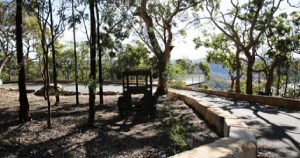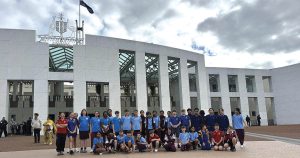“No-one would understand what it was like in the 1920s unless they had lived through it” said an early resident, whose husband had served in France during World War1. All around were those who were injured in body and mind. An all pervading deep sense of loss yet, in other ways, a sense of freedom brought about by huge changes in society and a total disregard for many of its rules.
It is not hard to visualise a day, described many years later by a ninety year old resident, when people of Galston and surrounding settlements soberly gathered around the new Galston Cenotaph. The whole project was a community initiative and a way of expressing the collective sadness. There Mr Booth, the stonemason who lived in Johnson Road, had shaped the blocks of local sandstone, brought from the quarry, at the end of what is now School Road. They were brought on a bullock wagon, owned by Mr Flarity, who was the striker for the blacksmith, Mr Fishburn. Mrs Stokes from Crosslands track had arranged the catering, Mr Campbell the school master, had used his stern ways to organise the pupils. The names of sixty young men had been inscribed on the four sides of the column. More than a quarter of those – Gartung, Gartung, Taylor, Barker, Henstock,,Gilligan, Finklestein, Wilson, Fuller, Fuller, Fuller, Campbell, Campbell, Harvey, Pugsley, Fagan, Dumbrell, Collins, Williams – had a star beside them signifying that they had been killed. The repeated names indicate that many families saw more than one member lost in the war.
When the Historical Society carried out detailed research of those from Galston who had served many more were discovered. The connection was often tenuous. It was also discovered that the Cenotaph had no official record; clearly the community had used its initiative and avoided official channels.The Society, the local RSL sub branch and Hornsby Shire Council have now formalised the records and arranged for the preservation and maintenance of this most important piece of local history, a symbol of a community’s grief and the service of young men in war.







